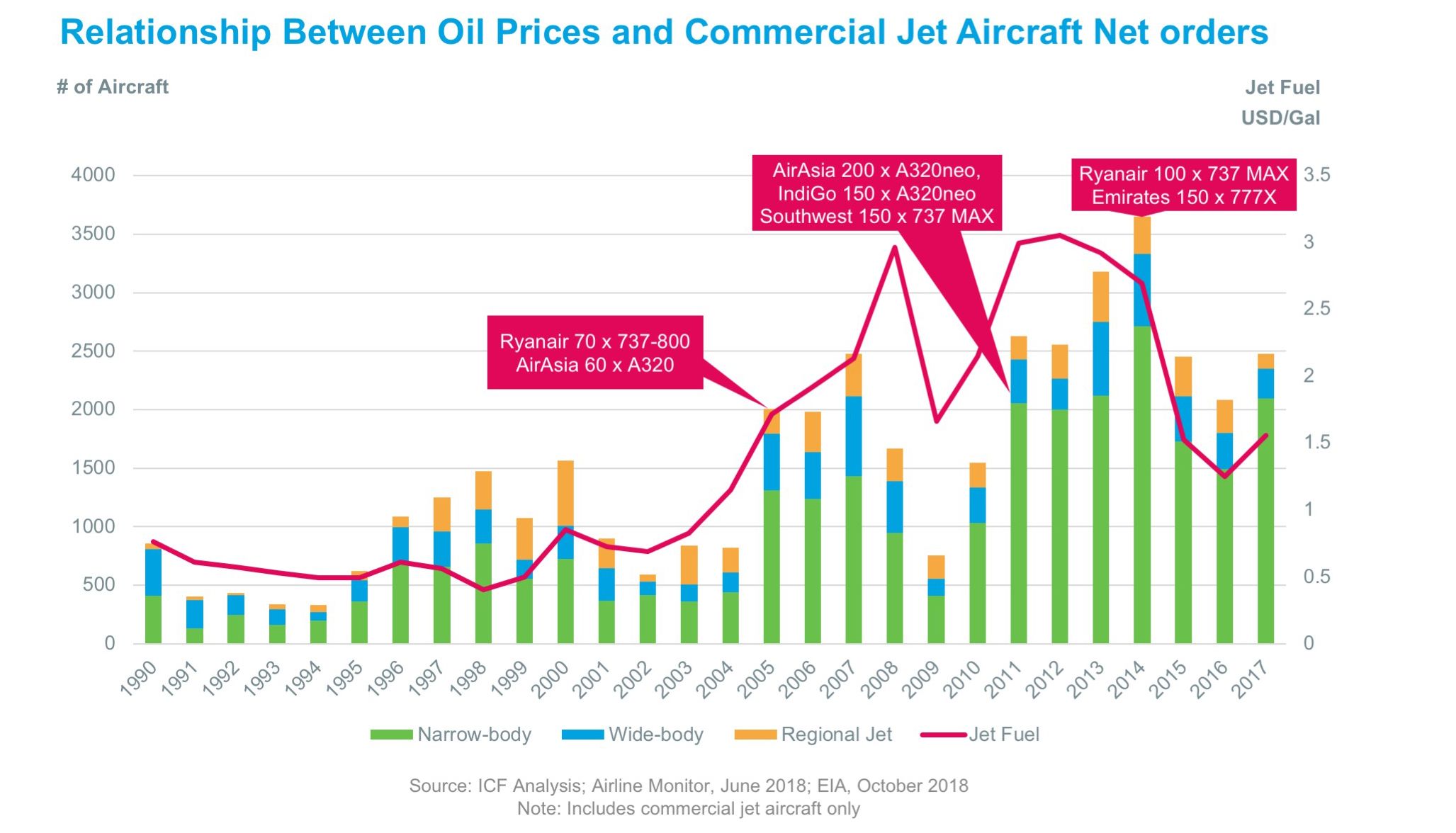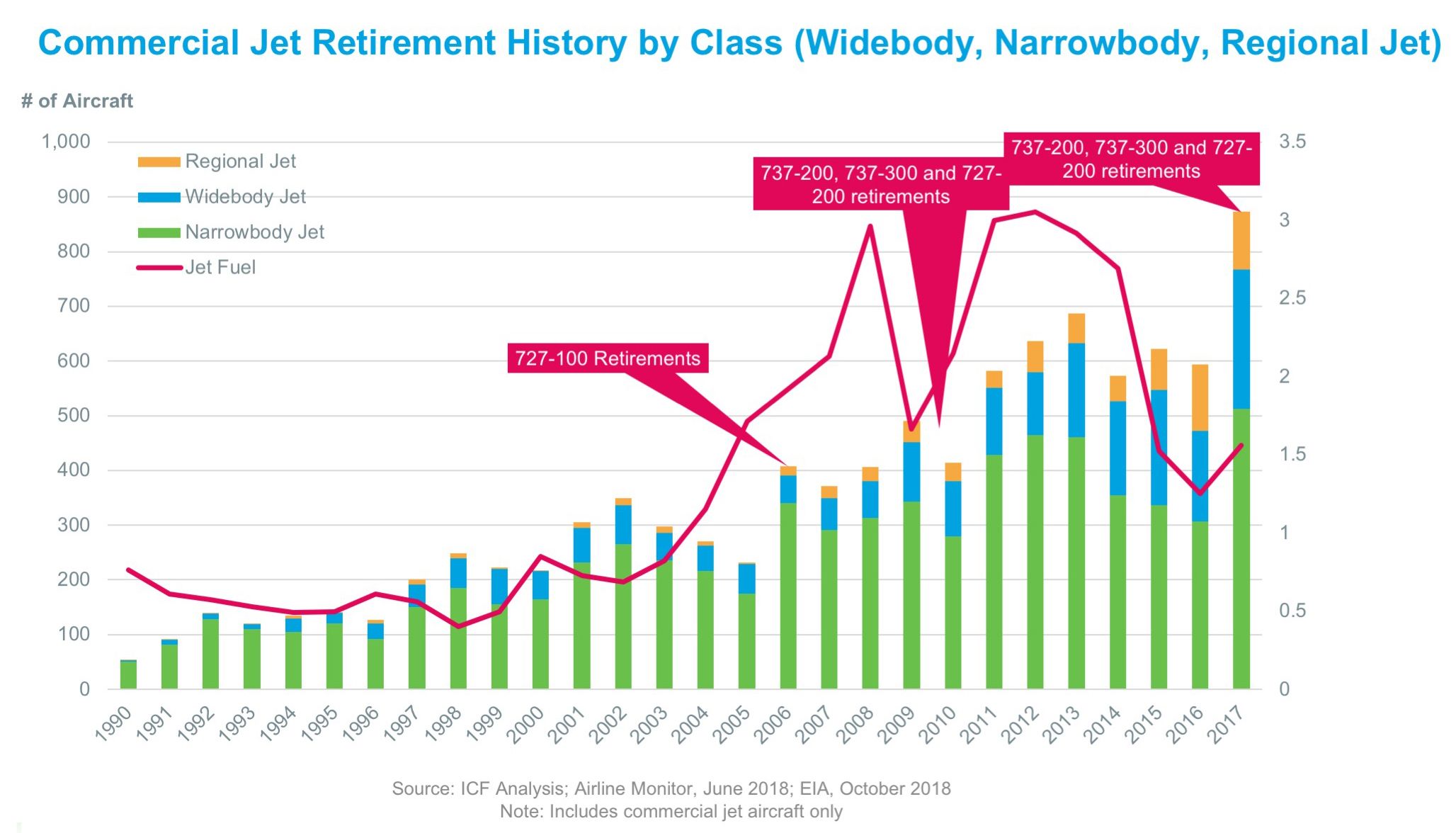Fuel prices affect only part of aircraft appraisals
Jet fuel prices have long driven airline profitability and the aviation industry as a whole, representing between 14 percent and 31 percent of airline operating costs in the past decade.
History shows that significant movement in fuel price is a key driver in aircraft purchase and retirement decisions, given that the comparative operating economics of new versus used aircraft change dramatically… with a relatively small change in fuel price.
Airline ordering behavior has grown reactive to fuel prices, especially since the end of the 2008-09 recession. When oil prices remained stubbornly high, airlines were motivated to place new aircraft orders to reduce fuel consumption and gain operating cost advantage, with the added benefit of reducing emissions and noise. As jet fuel reached $3 per gallon in 2011, Airbus registered a record order of more than 1,000 A320-200neo aircraft in a single year—not counting the smallest and largest variants of the neo family.

How fuel impacts narrowbody versus widebody aircraft
As fuel prices have gradually risen, recent years have seen a resurgence in orders for next-generation aircraft (especially the Airbus A320neo and Boeing 737 MAX families). These increased orders coincide with the retirement of older, less fuel-efficient aircraft.
As fuel prices increase, older aircraft become less profitable to operate at higher utilizations than advanced technology aircraft and are consequently retired in increasing numbers. This is especially true in the narrowbody sector: as fuel started inching back up in 2017, more than 800 aging jet aircraft were retired worldwide.

On the other hand, as narrowbody aircraft have become more capable, demand for widebody aircraft has been relatively muted. Widebody aircraft orders constitute less than 20 percent of the total commercial jet aircraft orders in the current decade, compared to more than 45 percent in the previous decade. A drop in fuel prices, among other factors, has also adversely impacted certain next-generation widebodies (such as the Boeing 777X and Airbus A330neo, launched in 2013 and 2014 respectively).
While fuel is a consideration when it comes to aircraft purchasing decisions, the lower order volume for widebodies during the most recent cycle, relative to single aisle aircraft, can also be attributed to smaller customer bases and significant order volumes achieved in the post-9/11 period driven by "clean-sheet" designed 787 and A350. Further, market sentiment has turned against large widebodies in the face of route fragmentation as air traffic demand grows and new city pairs become economically feasible, only to be served by smaller aircraft.
Interestingly, the retirement patterns of widebodies, unlike narrowbodies, are not strongly correlated to fuel price. Several drivers make it harder for airlines to retire widebody aircraft given their high level of customization and deployment on strategic routes. Additionally, a smaller widebody operator base and higher reconfiguration costs makes widebody aircraft much less liquid than narrowbodies.
What aircraft types and fuel prices mean for aircraft appraisals
While many may have understood this relationship, the data above shows that the value premium of new versus older aircraft moves in close correlation to fuel prices. When conducting aircraft appraisals, it is important to take into account outside influences beyond just the physical attributes of the aircraft itself. External factors can and do influence an aircraft’s value and their active consideration by appraisers can help form a more reasonable appraisal range.
In order to ensure you are getting a comprehensive view of aircraft values, make sure that you are using a dynamic platform that includes numerous external factors, including fuel prices. ICF’s online Truebook™ platform encapsulates insights from ICF’s appraiser team and reflects our detailed and thorough review of the commercial and technical aspects of narrowbody and widebody aircraft, product life cycle, incorporated technology, industry demand and current order book.
This helps you better understand the market demand and relative residual value risk outlook for these types in a dynamic fuel price environment—informing pricing and risk models whether you are buying, selling, financing, or operating those assets.
